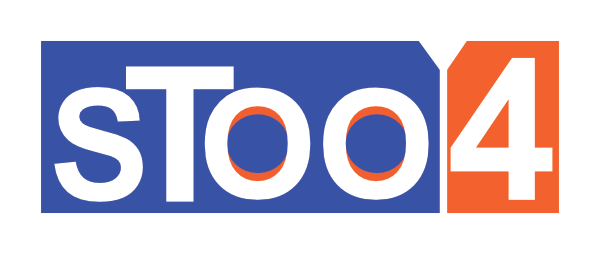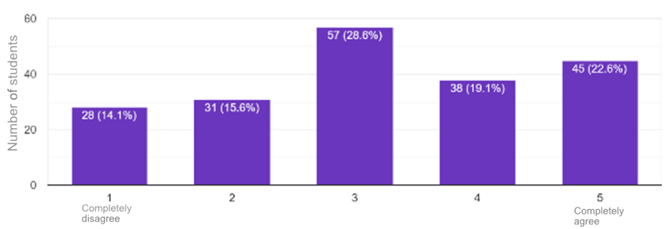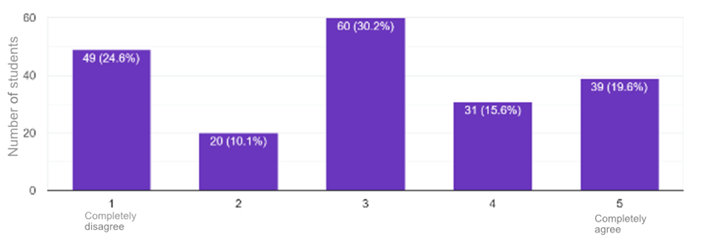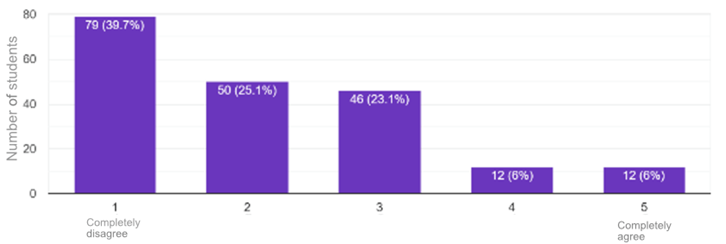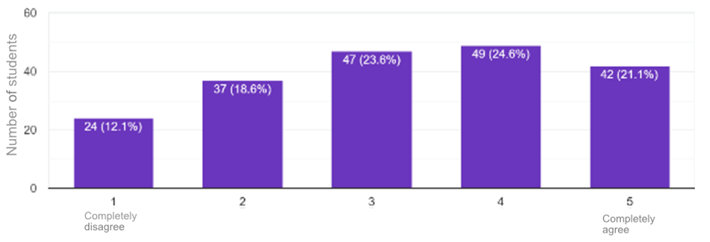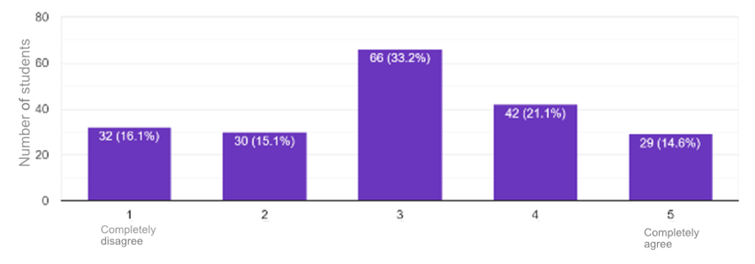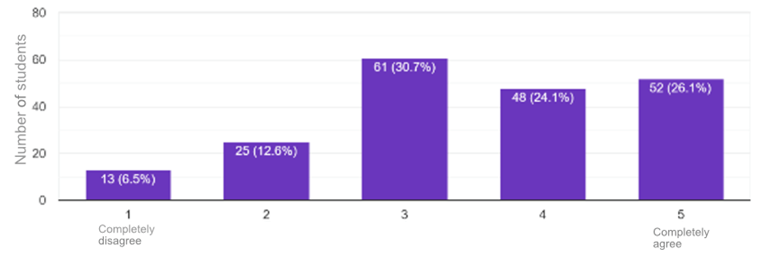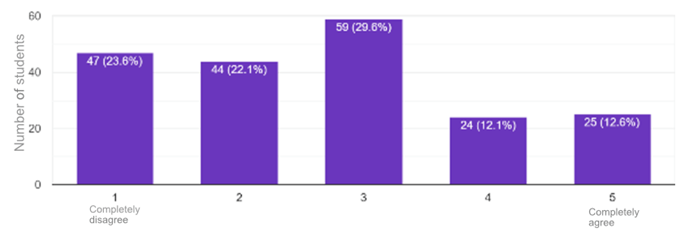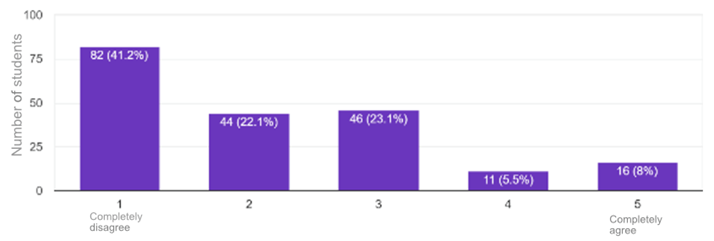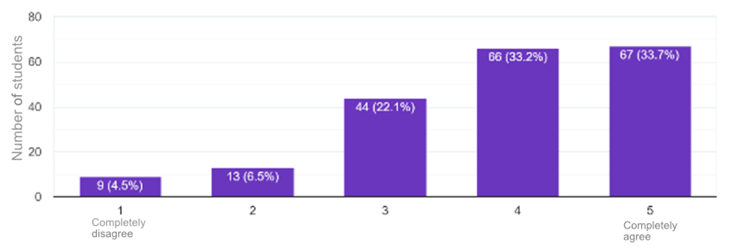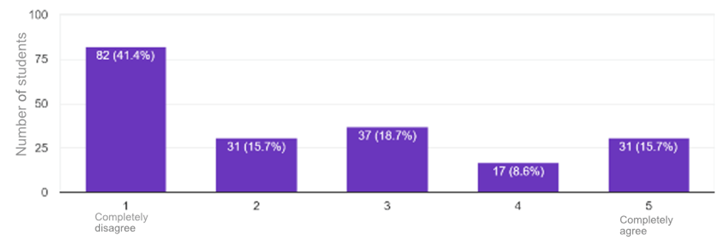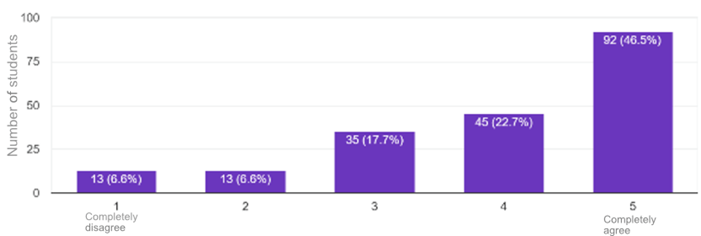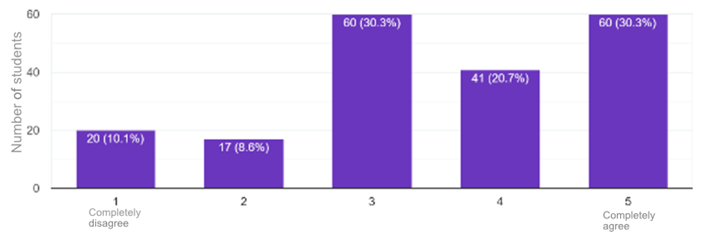Digital Education: Education today for tomorrow
|
Teaching (Today for) Tomorrow: Bridging the Gap between the Classroom and Reality 3rd International Scientific and Art Conference |
|
|
|
| Section - Education for digital transformation | Paper number: 1 |
Category: |
Abstract |
|
The aim
The |
|
Key words: |
|
|
Introduction
Today, in the era of science and technology rapid development, when artificial intelligence methods are used in many scientific disciplines, among other things, for the development and improvement of speech technologies that enable communication between humans and computers through speech (Sovilj-Nikić, S. et al., 2014; Sovilj-Nikić, S. et al.,2018), information and communication technologies (ICT) have become indispensable in all segments of modern society, including education. Modern education requires a new model of active learning that involves the use of digital resources of the modern world. The need for education based on the application of digital technologies is increasingly emphasized. However, the integration of digital technologies into curricula is a complex process influenced by a number of factors (Balanskat et al., 2006). The use of digital technologies in the teaching process has been adopted in the strategies of many European countries (Novković Cvetković & Belousova, 2018). In order to adapt to modern changes, teachers need to possess a variety of digital competencies (Nikolić et al., 2020). The use of digital media in education is the path to digital literacy of teachers, which is essential for raising the quality of education in the modern world. The digitalization of education is a process that requires institutional action by all levels of management in the education system (Džigurski et al., 2013).
TheDigitalization integrationin education changes the place and role of Informationteachers and Communicationtextbooks Technology (ICT) into primary education has revolutionizedin the teaching andprocess, where they are no longer the main source of knowledge. Modern technology provides students with diverse learning process,situations, aligningindividualization educationof withlearning, affects multiple senses and provides higher quality final outcomes. Teaching should be organized in a way that creates such pedagogical situations that engage the complete personality of the student, his/her mental, affective and cognitive capacities. Effectively organized teaching that includes the use of digital media allows the student to be the focus of the cognitive process in all phases of the lesson. In this way, the student is no longer the object of the teacher's action (Nikolić et al., 2020).
Teachers need to be digitally literate in order to apply modern technologies in education. Therefore, it is inevitable that teachers are constantly trained in the application of modern educational technology, as well as intensively improve their IT skills (Bjekić et al., 2018). Teachers need to be systematically motivated to supplement their knowledge in order to be able to competently respond to the demands of anthe increasinglyprofession. digitalMany society.education systems encounter a lack of qualified teachers for the transfer of IT knowledge, contributing to a major bottleneck in the spread of ICT tools,in suchthe aseducational interactiveprocess. whiteboards,A digital textbooks, gamified applications,well-prepared and adaptiveeducated learningteacher platforms,is offerthe opportunitiesmost toimportant makecomponent learning more engaging, interactive, and personalized. These technologies not only support cognitive development but also foster essential 21st-century skills, such as critical thinking, creativity, and digital literacy (Dingli et al. (2018)). However,for the successful implementation of teaching (Chetty et al., 2014).
Generally speaking, there are major deficiencies in IT skills among teachers. For example, in a survey of elementary school teachers in the United States, only 10% responded affirmatively that they understood the concept of computational thinking (Campbell & Heller, 2019). According to a study conducted by Google (2016), 75% of teachers in the United States misinterpreted “creating documents or presentations on a computer” as indicating a poor understanding of computer literacy. Other studies, surveys, and interviews have found that teachers in India, Saudi Arabia, the United Kingdom, and Turkey have low self-reported confidence in their understanding of modern technology and its applications in education (Raman et al., 2015). To address these challenges, many school systems have introduced continuing professional development, postgraduate certification programs, and ICT credentials that provide additional training and education for teachers (Heintz et al., 2016). This additional training uses the existing teacher workforce to meet the needs for digital competences, rather than recruiting specialized experts from outside the school system. For example, the British Information Society has created 10 regional university centers to conduct training activities, including lectures and meetings to facilitate collaboration and easier application of ICT in primaryeducation.
The Strategy for the Development of Teaching in Serbia emphasizes the importance of digital technologies for the overall development of the education requiressystem. addressingSome significantof challenges,the includingrecommendations that can be found are related to the promotion of the pedagogical use of ICT in order to encourage innovation in teaching and achieve high educational standards. It is recommended that teachers also possess ICT, digital and media literacy, as well as knowledge of modern concepts, methods and tools related to the use of ICT in the teaching process (Novković Cvetković & Belousova, 2018). The results of studies on the application of digital and online learning in vocational education in Serbia have particularly emphasized the need for improving teacher readiness,competencies studentthat attitudes,are thenecessary digital divide, andfor the development of infrastructuredigital teaching materials (Džigurski et al., 2013).
Digital education
A new study program for undergraduate and supportivemaster's policies.studies entitled Digital Education has been accredited at the Faculty of Education of the University of Novi Sad for the 2023/24 academic year (Faculty of Education, 2023). The goal of this study program is to train an educational profile that will provide professional assistance and support to teachers in primary and secondary schools in the application of information and communication technologies during the teaching. Through this study program, students will acquire the necessary professional knowledge in the fields of digital technologies as well as pedagogy, psychology and didactics. They will be able to create and use interactive, dynamic and multimedia educational content based on web platforms such as multimedia web presentations, educational computer games, posting teaching content on school websites, etc. This study program also enables them to master modern teaching methods and technologies, as well as the basics of educational sciences, and to apply the acquired knowledge in practice.
While attending the Digital Education study program in basic studies, students will have the opportunity to acquire knowledge in the field of educational sciences, informatics and computing, programming, algorithmic thinking, mobile technologies, application of ICT in education, and multimedia technologies through mandatory and a large number of elective courses. Upon completion of the study program, the student will possess the necessary practical knowledge in the field of digital technologies and informatics, which allows him/her to create and use educational digital materials for various subjects in accordance with current pedagogical practice and modern didactic recommendations. The student is also able to independently decide on the choice of appropriate digital teaching aids, as well as to develop and use personalized educational software.
The practical part of education is very important within this study program. Pedagogical practice is mandatory during all four years of basic studies, and also in both semesters of master's studies. In cooperation with experienced mentors in primary and secondary schools, students will gain practical experience in working with students, with constant support from faculty teachers in order to develop their skills as future teaching assistants. The implementation of tasks includes the creation of multimedia presentations and their posting on the school website, as well as the creation of educational digital materials, which include quizzes, crosswords, associations, puzzles, etc. for the needs of various teaching subjects.
The Master of Academic Studies Digital Education study program is designed to respect previously acquired knowledge and skills, and further build on theoretical and practical knowledge acquired in basic academic studies through lectures, practical teaching in the form of laboratory and experimental exercises, as well as pedagogical practice. The program involves education in accordance with the latest scientific achievements in the field of scientific research methodology, application of artificial intelligence technologies in education, creation of web content and methods of teaching computer science.
Practical teaching is a very important part of the study program. Pedagogical practice is implemented in cooperation with educational institutions that provide students with the opportunity to apply acquired knowledge in real situations and develop practical skills necessary for future work. The goal is to improve the acquired practical knowledge through independent research work that is reflected in the application of new technologies in practice, monitoring their effects and achieved results with a special focus on gifted students on the one hand and students with special needs and students from marginalized social groups on the other hand, and to use the acquired knowledge in further research work. When implementing research tasks, the student applies the knowledge acquired from the Methodology of scientific research work. The implementation of tasks includes studying the literature in the field of applying new technologies in education and designing specific research tasks that will be implemented during the practice in school with a special focus on gifted students on the one hand and students with special needs on the other hand.
Upon completion of the Master's degree program, the student will have advanced academic and/or professional knowledge related to theories, principles, and processes in the field of computer science teaching, as well as the application of new technologies in education. The student will also be able to analyze and evaluate different concepts, models, and principles of theory and practice, improving existing practice, and will demonstrate a positive attitude toward the importance of lifelong learning in personal and professional development. Having in mind that this profile possesses the necessary knowledge in the field of digital technologies on the one hand and all the necessary pedagogical, psychological and methodical knowledge on the other hand, the Digital Education study program meets the challenges of modern education.
Material and method
The research in this paper aims to examine and determine the degree of digital competence of teachers and the level of their capability for independent use of ICT as well as to determine attitudes of teachers toward the introduction of a professional associate into educational practice. These associates would be a help and support to teachers in applying of ICT in preparing lessons and teaching. The research within this paper was conducted in primary and secondary schools in the territory of Vojvodina, which is an autonomous region within the Republic of Serbia. In the research the survey method and an anonymous questionnaire were used. The questionnaire was filled out by 240 teachers.
The first part of the survey contains demographic questions related to gender, age and educational level of the examinees that represent the research sample. The gender structure of the examinees, which shows that almost 80% women participated in the research, is given in Figure 1.
ICT
Figure 1. Gender structure of examinees
Figure 2 shows the age structure of examinees. The smallest number of examinees (2.94%) is under 30 years old, 21.85% are transformingbetween traditional pedagogies by providing diverse31 and interactive40 methodsyears forold, delivering30.25% content.are Digitalbetween platforms41 and applications50 offeryears aold, rangewhile 37.39% of multimediaexaminees resources,are enablingteachers studentsaged 51 to visualize60. Examinees over 61 years old is 7.56% of the total number. Based on the results presented, it can be seen that more than two-thirds of teachers are between 41 and interact60 withyears complexold, concepts.while Forthe example,smallest Saifpercentage etof al.examinees (2021)is presentsunder how30 augmentedyears realityold. (AR) enhances student engagement and comprehension. AR allows students to manipulate virtual models or explore learning content, turning abstract topics into tangible learning experiences.
Adaptive
Figure
2.ICTAge also facilitates collaborative learning. Digital tools enable students to work together on projects and connect with peers across the globe. These interactions encourage teamwork, cross-cultural understanding, and problem-solving. For instance, Kangas et al. (2022) highlighted how the integrationstructure of ICT in STEAM (Science, Technology, Engineering, Arts, and Mathematics) projects promote creativity and interdisciplinary thinking, preparing students for the complex challenges of the future.examinees
The successeducational structure of ICTexaminees is shown in primaryFigure education3. depends significantlyBased on students'the attitudesdata towardpresented technology.in PositiveFigure perceptions3, it can enhancebe engagement,observed motivation,that andthe largest percentage of examinees (38.4%) completed academic achievement.studies or bachelor’s degree, while the smallest number of examinees (1.27%) completed specialized studies. Almost three quarters of the total number of examinees have completed academic studies or a master's degree. Rodriguez-JimenezOnly et1.69% al.of (2023)examinees argue that students often view ICT ashave a valuable addition to their learning experiences, particularly when tools are intuitive and aligned with their interests. Interactive applications and gamification have been particularly effective in maintaining students’ curiosity and enthusiasm.doctorate.
However,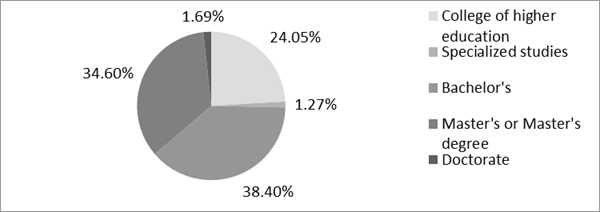
Figure 3. Educational structure of examinees
Results and discussion
The second part of the questionnaire contains questions whose answers allow to determine the level of digital competence of teachers, as well as the level of ability to independently use ICT for preparing lessons and teaching. Figure 4 shows the examinees' answers to the question related to attending a training course related to the use of ICT in teaching. The majority of the total number of examinees (77.5%) attended some course. It can be noticed that more than three quarters of examinees have some form of informal ICT education.

Figure 4. Have you attended any training course related to the use of ICT in teaching?
The purpose of using modern technologies is shown in Figure 5. Examinees had the opportunity to give multiple answers and it can be seen that modern technologies are used most often for finding teaching materials (26.42%) and preparing for teaching (22.63%), then follow information dissemination (20.85%), communication (17.77%) and social networks (11.02%). Other purposes, including conducting lessons, student motivation, conducting online classes and other needs are represented by less than one percent.
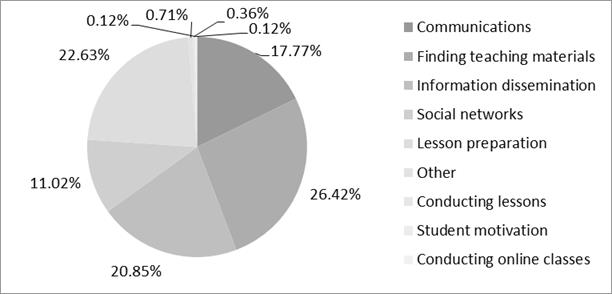
Figure 5. The purpose of using modern technologies
Figure 6 shows the examinees' answers to the question of which modern technology tools and devices they use when preparing lessons and teaching. Examinees could give multiple answers. Based on the answers given, it can be observed that the most commonly used device is a computer or laptop, which was chosen by 230 examinees when preparing lessons and teaching. In addition, examinees separated the Internet (215 examinees), a video beam (192 examinees), e-platforms (137 examinees), educational software (61 examinees), interactive whiteboard (38 examinees) and TV (28 examinees). The smallest number of examinees (only 5 examinees) chose DVD recorder as the device they most often use when preparing lessons and teaching.
In the similar research conducted in primary and secondary schools in the territory of the Municipality of Zvornik, the largest percentage of examinees also stated that they use the computer the most out of digital devices when preparing lessons and teaching (Blagojević et al., 2022). Authors who researched the use of computers for the purpose of preparing lessons and teaching by teachers who do not allteach studentsinformatics embracecame to similar findings (Ilić, 2020).

Figure 6. Which modern technology tools and devices do you use when preparing lessons and teaching?
Figure 7 shows the examinees' responses related to self-assessment of IT literacy. The largest number of examinees, representing almost half of the total number (44.07%), rated their IT literacy as good with a score of 4. While 27.54% of examinees gave a score of 3, and a quarter of examinees (25.42)% consider their IT literacy is very good. Of the total number of examinees 2.54% rated their IT literacy as 2. Less than one percent (0.42%) of examinees consider their IT literacy is very poor. More than 95% of examinees rated their IT literacy with a score of 3 (adequate) or better.
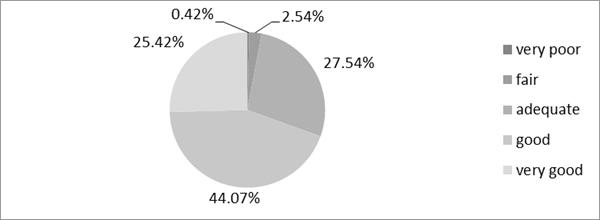
Figure 7. Rates of IT literacy
Alos, according to research (Rogošić et al., 2021) conducted in secondary vocational schools in Zagreb and Zagreb County, the majority of teachers rate their IT literacy very highly in terms of the use of widely applicable computer programs within the Microsoft Office package.
The last part of the questionnaire used a modified Likert scale with multiple-choice questions to examine teachers' attitudes towards the introduction of an ICT seamlessly.professional Technicalassociate challenges,into lackeducational practice. Figure 8 shows that almost two-thirds of relevancethe examinees strongly agree or mostly agree with the statement that they would like to have an ICT professional associate. It also can be notice that about 15% of examinees strongly disagree or mostly disagree with that statement and about one fifth of examinees have no opinion regarding ICT specialist as a collaborator.

Figure 8. I would like to have an ICT specialist as a collaborator
More than half of the examinees strongly agree or mostly agree with the statement that a professional associate would be of great help in digitalpreparing content,lessons and insufficientteaching, teacherwhile supportone canquarter leadof the examinees stongly disagree or mostly disagree with this statement, as shown in Figure 9. Almost one-fifth of examinees have no opinion regarding the significance of assistance from professional associate in preparing lessons and teaching.

Figure 9. Having a professional associate would be of great help to frustrationme in preparing lessons and disengagementteaching
The research findings (AlthubyaniMilić & Milojević, 2022) also show that the examinees have a great need for professional help in order to expand their knowledge and improve the skills needed for teaching using ICT.
Figure 10 shows that almost two-thirds of the examinees strongly agree or mostly agree with the statement that they would like to have an ICT professional associate which would assist them in creating quizzes and presentations to make the classes more engaging and improve the teaching quality. Almost a fifth of examinees strongly disagree or mostly disagree with this statement, while 15% of them are undecided.
Also, according to research (2024)).Ranđelovic, Ensuring2022), the majority of teachers believe that the application of ICT in teaching contributes to the improvement of the quality and durability of acquired knowledge among students.

Figure 10. I would like a professional associate to assist me in creating quizzes and presentations to make the classes more engaging and improve the teaching quality
Figure 11 shows the examinees' answers about the need to know various digital tools arefor accessible,creattion reliable,of teaching materials and well-integratedtests. intoBased on the curriculumexaminees' isanswers, essentialit forcan fosteringbe aseen positivethat learningthree environment.quarters of the examinees strongly agree or mostly agree with the statement that they would like to have more knowledge about digital tools in order to create more fun and better teaching materials and tests and thus motivate students to better follow the lessons. About 13% of examinees strongly disagree or mostly disagree with this statement, while 12% have no opinion on this issue.
Teachers
Figure 11. I would like to theknow effectivevarious implementationdigital of ICT in primary education. Their preparedness, attitudes,tools and teaching strategies directly impact how technology is utilized in classrooms. Despite the growing availability of digital tools, many educators feel inadequately trainedlearn to integrate ICT into theircreate teaching practices effectively. Althubyani (2024) emphasized the importance of professional development programs in equipping teachers with the technical skillsmaterials and pedagogical frameworks needed to harness ICT effectively.tests
Furthermore,Similar teacherresearch attitudes(Milić toward& Milojević, 2022) shows that teachers have a significant need to learn about digital tools intended for the creation of teaching materials, including quizzes, educational computer games and multimedia presentations. Also, according to research (Randjelovic, 2022), the majority of teachers believe that the application of ICT playin teaching contributes to the improvement of the quality and durability of acquired knowledge among students.
At the end of the questionnaire, there are questions related to the new accredited study program Digital Education. Structure of examinees' answers to the question “Are you familiar with the fact that at the Faculty of Education in Sombor from the academic year 2023/24 is there an accredited study program Digital Education at the undergraduate and master's level, which trains a crucialprofile rolethat will help and support teachers in itsthe adoption. Educators who view technology as an enablerapplication of innovativeICT teachingduring the preparation lessons and teaching?“ is shown in Figure 12. Based on the responses received, it can be concluded that the more than 80% of examinees are not familiar with the accreditation of the Digital Education new study program.
The responses which show that more likelythan totwo usethirds of examinees support the new accredited study program and consider it creativelyuseful andare confidently.given Buildingin Figure 13. About 7% of examinees do not support the accreditation of the new study program, while about a culturefifth of collaboration,examinees whereare teachers share best practices and successes, can enhance their confidence and willingness to experiment with new digital tools.undecided.
While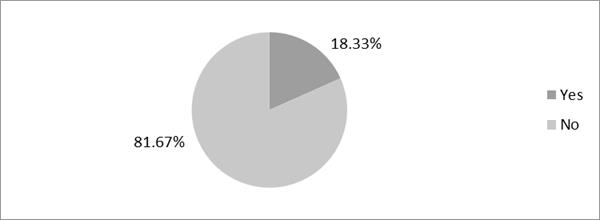
AddressingFigure 12. Digital Education study program
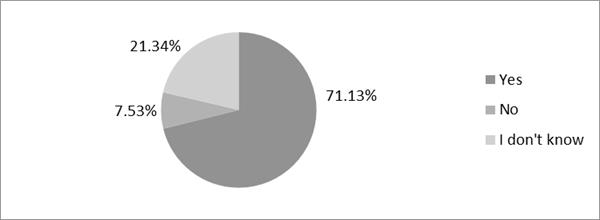
Figure 13. Do you support and consider the digital divide requires multi-faceted approaches, including government initiatives to provide devices and internet access to underserved communities, investment in school infrastructure, and partnerships with technology developers. Schools can also play a crucial role by implementing inclusive ICT programs and ensuring that all students, regardlessaccreditation of theirDigital socio-economicEducation background,study haveprogram opportunitiesis to develop digital skills.useful?
The successfulfindings integrationof this research show that the introduction of a professional associate in the field of ICT inwould primarybe educationextremely callsuseful for a coordinated approach involving educators, policymakers, and technology developers. Policies should prioritize investments in teacher training, infrastructure, and research to support sustainable ICT adoption. Furthermore, ICT initiatives must align with broader educational goals, such as fostering critical thinking, creativity, and collaboration.
Research into emerging technologies like virtual reality (VR), AI, and AR will continue to shapeimproving the futurequality of ICTteaching, inwhich education. Saif et al. (2021) suggested that these technologies could create even more immersive and engaging learning experiences, further enriching the educational landscape. However, to maximize the potential of ICT, it is essential to address challenges related to access, equity, and teacher readiness.
This paper examines students’ attitudes toward ICT in primary education, drawing on recent studies to explore the factors influencing these attitudes and their implications for teaching and learning. By synthesizing evidence from contemporary research, it aims to provide insights into how educators can optimize ICT integration to maximize its benefits while addressing its challenges. Ultimately, understanding and shaping students' attitudes toward ICT will be crucial in preparing them for a rapidly evolving digital world.
Methodology
This study explores the attitudes of primary school students toward the use of ICT in their education. Study was conducted between April and May 2023, the research surveyed 199 students, aiming to gain insights into their perspectives on how ICT impacts their learning experience. By examining students’ experiences, preferences, and the challenges they face, this paper aims to provide a deeper understanding of the role ICT plays in shaping their educational journey and to offer recommendations for optimizing its use in primary education.
Results
Students had to express their agreement with 17 statements about their attitudes about ICT in education on a scale from 1 (completely disagree) to 5 (completely agree).
Figure 1.
I think I manage my screen time well
The results presented in Figure 1 reflect a mixed but relatively balanced view on screen time management. While almost half of the students (47.7%) rated the statement positively (Agree or Strongly Agree), a significant number (31.2%) remained neutral, and about 21.1% expressed disagreement or strongly disagreed. This suggests that, while many students feel they manage their screen time well, there is still a notable portion who may either struggle with it or are uncertain about how well they manage it.
Figure 2.
I feel great after spending more than an hour in front of the screen
The results in Figure 2 show a relatively mixed response to the statement, but with a notable tendency toward positive feelings about extended screen time. While 41.7% of students (combined total of Agree and Strongly Agree) reported feeling good after spending more than an hour in front of a screen, a considerable portion of students (29.7%) disagreed or strongly disagreed, suggesting that many students may not feel great after prolonged screen time. The remaining 28.6% of students felt neutral, suggesting that the effects of screen time might be less impactful or not strongly felt by this group. This variation highlights differing experiences and perceptions about the impact of prolonged screen time.
Figure 3
I understand the material better when the teacher explains it to me with the help of a computer and projector than with the help of a blackboard and chalk
Figure 3 display results that suggest a divided view on the effectiveness of using a computer and projector for teaching compared to the traditional blackboard and chalk. While 35.2% of students (combined total of Agree and Strongly Agree) feel that digital tools improve their understanding, a same portion of students (34.7%) disagreed (Strongly Disagree and Disagree). The largest group, 30.2%, were neutral, indicating that for many students, the method of instruction might not make a significant difference in their comprehension of the material. These findings reflect a mix of preferences, with some students favoring traditional methods, others preferring digital tools, and many remaining undecided.
Figure 4
I better understand the material we practice with the help of digital quizzes and games than when we solve tasks in a workbook or on worksheets
The results in Figure 4 indicate a somewhat mixed response toimplies the use of digital quizzes and games versus traditional workbook or worksheet tasks for understanding the material. While 38.2% of students (combined total of Agree and Strongly Agree) feel that digital tools improve their understanding, a significant portion (31.7%) disagreed or strongly disagreed with this statement. The largest group, 30.2%, remained neutral, suggesting that for many students, there is little difference between the two methods or that they are equally effective. These findings suggest that while digital tools are favored by some, others may still prefer more traditional methods for learning.
Figure 5
My teachers use digital technology often enough in the teaching process
The results suggest a generally positive view regarding the use of digital technology in teaching, with 60.3% of students (combined total of Agree and Strongly Agree) believing that digital technology is used often enough in the classroom. However, there is still a portion of students (11.0%) who feel that their teachers use it too infrequently, with 28.6% of students remaining neutral. Overall, the data indicates that while most students feel that digital technology is integrated into the teaching process at an appropriate frequency, there is still room for improvement, particularly for those who feel it is underused.
Figure 6
My teachers overuse digital technology
The results in Figure 6 indicate that the majority of students, 64.8% (combined total of Strongly Disagree and Disagree), do not feel that their teachers overuse digital technology, suggesting that most students find the use of digital tools to be balanced or appropriate. On the other hand, a smaller group of students, 12.0% (combined total of Agree and Strongly Agree), feels that digital technology is overused in the teaching process. The remaining 23.1% were neutral, indicating that they did not have strong opinions on whether digital technology is overused or not. Overall, the findings suggest that, for most students, the use of digital technology in teaching does not seem excessive.
Figure 7
My teachers use digital technology that is appropriate and interesting
Results in Figure 7 indicate a generally positive perception of the digital technology used by teachers. A significant 65.3% of students (combined total of Agree and Strongly Agree) feel that the technology used is both appropriate and interesting, reflecting a high level of engagement with the tools used in the classroom. However, a smaller portion of students, 12.5% (combined total of Strongly Disagree and Disagree), feel that the technology is either not suitable or not engaging. The 22.1% who rated it neutral may be indifferent or feel that the technology is neither particularly exciting nor ineffective. Overall, the data suggests that the majority of students find the digital tools usedtechnologies in their classroomsfull to be effectivepotential and engaging.
Figure 8
I can study for an hour without using my mobile phone/tablet/computer in order to rest
Figure 8 presents results that suggest that most students are able to study for an hour without relying on their mobile phones, tablets, or computers to rest. 59.8% of students (combined total of Agree and Strongly Agree) feel confident in their ability to study without digital distractions. However, there is still a portion of students, 22.7% (combined total of Strongly Disagree and Disagree), who find it challenging to study for an hour without the use of these devices, possibly indicating a reliance on digital tools for breaks or focus. The 17.6% neutral responses suggest that for some students, this may vary depending on the situation. Overall, most students report a strong ability to focus and study without digital interruptions.
Figure 9
Digital devices often distract me while studying
The results reveal that a sizable number of students feel that digital devices are a source of distraction while studying. Almost 45.7% of students (combined total of Agree and Strongly Agree) believe that digital devices often interfere with their focus during study sessions. However, a larger portion of students, 30.7% (combined total of Strongly Disagree and Disagree), do not feel that digital devices are a frequent source of distraction. The 23.6% neutral responses suggest that for some students, the impact of digital devices on their focus may vary, depending on the situation. Overall, the data highlights that while many students feel distracted by digital devices, there is also a significant portion who feel that they can study without digital interruptions.
Figure 10
I think we learn more with the use of digital technology
The results presented in Figure 10 show a mixed but generally positive view of digital technology's role in learning. While 35.7% of students (combined total of Agree and Strongly Agree) feel that digital technology helps them learn more, a significant 31.2% (combined total of Strongly Disagree and Disagree) do not believe it contributes significantly to their learning. The 33.2% neutral responses suggest that for many students, the impact of digital technology on their learning is either unclear or not strongly felt. Overall, while many students see the value in digital tools for learning, there is also a notable portion who do not feel that these tools make a substantial difference.
Figure 11
I find the teaching in which digital technology is used more interesting
The results in Figure 11 suggest a generally positive perception of digital technology in making lessons more interesting. A combined 50.2% of students (Agree and Strongly Agree) feel that lessons incorporating digital technology are more engaging. However, 19.1% of students (Strongly Disagree and Disagree) do not feel that digital tools make the teaching more interesting, indicating that for some, traditional teaching methods might be preferred. The 30.7% neutral responses suggest that a significant portion of students is either indifferent or does not find a noticeable difference between lessons with or without digital technology. Overall, the data highlights a strong tendency toward finding digital technology-enhanced teaching more engaging, although not all students share this view.
Figure 12
Digital technology should be used every school hour
The results show a mixed opinion on the idea of using digital technology in every school hour. A significant 45.7% of students (combined total of Strongly Disagree and Disagree) believe that digital technology should not be used on every school hour of certain subject. However, 29.6% of students remain neutral, suggesting that some students might see value in digital technology but do not feel it needs to be always used. Only a smaller portion, 24.7% (combined total of Agree and Strongly Agree), feels that digital technology should be integrated into every school hour. Overall, the data suggests that while many students see the value of digital technology, they do not believeAlso, it should be overusednoted orthat incorporatedthere intoare everycertain lesson.limitations of this research that may affect the findings, having in mind that the research was conducted in primary and secondary schools only in the territory of Vojvodina. Therefore, it would be useful to conduct research on the territory of the entire Republic of Serbia and determine the attitudes of teachers in both urban and rural areas. In order to improve the Digital Education study program, it would be useful to direct further research towards examining students' satisfaction with the existing study program, as well as identifying their suggestions for improving the study program.
Figure 13
Digital technology should be used during complete lesson
Results presented in Figure 13 suggest that most students do not feel digital technology should be used during complete lesson. Majority of 63.3% students (combined total of Strongly Disagree and Disagree) believe that digital technology should not be continuously used throughout lesson. A smaller portion, 13.5% (combined total of Agree and Strongly Agree), supports the idea of using digital technology during complete lesson, but this group is relatively small. The 23.1% neutral responses suggest that some students may feel that digital technology could be used at certain times but not necessarily all the time. Overall, the data indicates a clear preference for using digital technology in moderation, rather than consistently throughout complete lesson.
Figure 14
Digital technology should be used occasionally
Figure 14 display results that indicate a strong preference for the occasional use of digital technology. A total of 66.9% of students (combined total of Agree and Strongly Agree) feel that digital technology should be used in moderation, specifically on an occasional basis. On the other hand, only 11.0% of students (combined total of Strongly Disagree and Disagree) disagree with statement that digital technology should be used occasionally. The 22.1% neutral responses suggest that some students may not have strong feelings on the matter, but the overall trend shows that most students prefer a balanced approach, with digital technology used occasionally rather than constantly.
Figure 15
I am happy when at school we get the task of recording an educational video ourselves
The results presented in Figure 15 show that a large portion of students, 57.1% (combined total of Strongly Disagree and Disagree), does not enjoy the task of recording an educational video, with many finding it less appealing. However, a smaller group, 24.3% (combined total of Agree and Strongly Agree), enjoys that type of task. Only 18.7% of students were neutral, indicating that for some students, the activity does not evoke strong feelings either way. Overall, while a minority of students find recording educational videos enjoyable, the majority do not feel particularly happy about this task.
Figure 16
I easily create my own digital content (video, presentation, digital poster, etc.)
Figure 16 presents results that indicate that most students feel confident in their ability to create digital content. A combined 69.2% of students (Agree and Strongly Agree) report being able to easily create content like videos, presentations, and digital posters. However, 13.2% (combined total of Strongly Disagree and Disagree) find it difficult to create digital content, indicating some challenges in this area. The 17.7% neutral responses suggest that for some students, the ability to create digital content may vary depending on the task or situation. Overall, the data shows that the majority of students are confident in their ability for digital content creation, but a small group faces difficulties.
Figure 17
I try harder when we get a task in which we need to use digital technology (record a video, make a presentation, digital poster, etc.)
The results in Figure 17 suggest that a significant number of students feel more motivated to try harder when tasks involve digital technology. A combined 51.0% of students (Agree and Strongly Agree) report that they put in more effort when digital technology is part of the task. However, 18.7% (combined total of Strongly Disagree and Disagree) do not feel more motivated by the use of digital tools. A sizable 30.3% of students were neutral, suggesting that for some students, the type of task or other factors may play a more important role than the use of digital technology. Overall, while many students find digital technology motivating, it does not seem to be a universal motivator for all students.
Conclusions
ThisThe studyresearch highlightsresults presented in this paper show even if the majority of teachers have a satisfactory level of digital competence and use digital technolgies in educational practice, most of them believe that the diverse perspectivesintroduction of primarya schoolprofessional studentsassociate regardingin the integrationapplication of ICT inwould theirbe education.extremely Thehelpful findingsfor revealhigher thatquality whileteaching studentsand generally appreciateenable the use of digital technologytechnologies in full capacity. Findings of this research show that the classroom,majority theirof preferences,teachers experiences,are not familiar with the accreditation of the Digital Education study program. Also, they support accreditation and challengesconsider varyit significantly.useful. ManyFinally, students recognizeon the benefitsbasis of ICTthe inobtained makingresults, learningit morecan engaging,be interactive,concluded andthat effective,there particularly through tools like digital quizzes, games, and adaptive platforms. However,is a considerablereal numberneed for accreditation of students expressed neutral or mixed feelings about the extentDigital ofEducation ICTstudy usage,program, with some preferring traditional methods for certain aspects of learning.
Students largely favor a balanced approach to ICT integration, with occasional use being seen as most effective. While many students feel confident in creating digital content and report increased motivation for tasks involving digital tools, others find prolonged screen time or excessive use of technology to be less desirable. These findings underscore the importance of tailoring ICT use to individual and group needs, ensuring it complement rather than overwhelms traditional teaching methods.
To maximize the benefits of ICT in primary education,but it is crucialnecessary to address key challenges, including minimizing digital distractions, bridging the digital divide, and ensuring that educators are adequately trained to integrate technology effectively. Future research should explore the long-term impacts of ICTwork on students' learning outcomes and well-being, as well as investigate strategies to optimize its use in fostering critical thinking, creativity, and collaboration. By adopting a thoughtful, inclusive approach, ICT can serve as a powerful tool for enhancing educational experiences and preparing students for the demands of a digital world.promotion.
References
Althubyani,Balanskat, A.A., Blamire, R., & Kefala, S. (2024)2006). DigitalA Competencereview of Teachersstudies andof theICT Factorsimpact Affectingon Theirschools Competencein Level:Europe. ABrussels: NationwideEuropean Mixed-Methods Study. Sustainability, 16(7), 2796.Schoolnet.
Dingli, S.Bjekić, Baldacchino,D., L.Krneta, R., & Milošević, D. (2018)2008). CreativityKompetencije andza digitale-nastavu literacy:u skillssistemu forprofesionalnih thekompetencija future.nastavnika osnovne škole. Inovacije u nastavi, 21(2), 7-20.
Rodriguez-Jimenez, C.Blagojević, de la Cruz-Campos, J. C.M., Campos-Soto,Lazarević, M., Jović, N. & Nikolić, M.(2022). Analiza stanja informatičke pismenosti učenika i nastavnika u osnovnim i srednjim školama sa opštine Zvornik. Bijeljinski metodički časopis, 13, 39-57.
Campbell, L., & Ramos-Navas-Parejo,Heller, M.S. (2019). Building computational thinking: Design and making in teacher education. Recruiting, preparing, and retaining stem teachers for a global generation (pp. 163-189). Leiden: Brill.
Chetty, R. Friedman, J., & Rockoff, J. (2014). Measuring the impacts of teachers II: Teacher value-added and student outcomes in adulthood. American economic review, 104(9), 2633-2679.
Džigurski, S. Simić, S., Marković, S. & Šćepanović, D. (2013). Istraživanje o upotrebi informaciono-komunikacionih tehnologija u školama u Srbiji. Beograd: Tim za socijalno uključivanje i smanjenje siromaštva.
Faculty of Education (2023). TeachingAccreditation. andRetrieved learningon mathematics28th March 2025 from http://www.pef.uns.ac.rs/index.php/home/2021-11-29-09-28-35/170-alreditacija2023
Google (2016). Trends in primarythe education: The roleState of ICT-Computer Science in U.S. K-12 Schools. Retrieved on 15th December 2024, from https://services.google.com/fh/files/misc/trends-in-the-state-of-computer-science-report.pdf
Heintz, F., Mannila, L. & Faernqvist, T. (2016). A systematic review of themodels literature.for introducing computational thinking, computer science and computing in K–12 education. Mathematics,FIE 112016 - Frontiers in Education 2016: The Crossroads of Engineering and Business (2),pp. 272.1-9). USA: Institute of Electrical and Electronics Engineers Inc.
Kangas,Ilić, S. (2020). Upotreba informacionih tehnologija u nastavi – stavovi i mišljenja nastavnika i učenika, dissertation, Novi Sad: Prirodno-matematički fakultet.
Milić, K. M. & Milojević, Sormunen, K., & Korhonen, T.A. (2022). CreativeMedijska learningi withinformacijska technologiespismenost innastavnika youngi students’bibliotekara STEAMu education.Srbiji Inu procesu izvođenja nastave na daljinu. STEM,Vjesnik Robotics,bibliotekara MobileHrvatske, Apps in Early Childhood and Primary Education: Technology to Promote Teaching and Learning (pp. 157-179). Singapore: Springer Nature Singapore.159-183.
LaraNenner, Nieto-Marquez, N., Baldominos, A., Cardena Martinez, A.C., & PerezBergner, Nieto,N. M.(2022). Informatics Education in German Primary School Curricula. In Bollin, A. & Futschek, G. (Eds), Informatics in Schools. A Step Beyond Digital Education ISSEP 2022 (pp. 3-14). Cham: Springer.
Nikolić, I., Banđur, V., & Martinović, D. (2020). AnUloge exploratorynastavnika u školi digitalnog doba. Sociološki pregled, 54(1), 88-103.
Novković Cvetković, B. & Belousova, A. (2018). Media and information literacy - the basis for applying digital technologies in teaching from the discourse of educational needs of teachers. Croatian Journal of Education/Hrvatski časopis za odgoj i obrazovanje, 20(4), 1089-1114.
Raman, R., Venkatasubramanian, S., Achuthan, K. & Nedungadi, P. (2015). Computer science (CS) education in Indian schools: Situation analysis using Darmstadt model. ACM Transactions on Computing Education (TOCE), 15(2), 1-36.
Ranđelović, A. & Vuković, O. (2022). Analiza stanja informatičke pismenosti u osnovnim i srednjim školama sa opštine Bijeljina. Bijeljinski metodički časopis, 13, 65-79.
Rogošić, S., Baranović, B. & Šabić, J. (2021). Primjena IKT-a u procesu učenja, poučavanja i vrednovanja u srednjim strukovnim školama: Kvalitativna analiza. Metodički ogledi: časopis za filozofiju odgoja, 28(1), 63-88.
Sovilj-Nikić, S, Delić, V., Sovilj-Nikić, I. & M. Marković, (2014). Tree-based phone duration modeling of the implementationSerbian language. Electronics and useElectrical ofEngineering an(Elektronika intelligentir platform for learning in primary education. Applied SciencesElektrotechnika), 10(20(3), 983.77-82.
Saif, A.Sovilj-Nikić, S., Mahayuddin,Sovilj-Nikić, Z. R.,I. & Shapi'i,Marković, A.M., (2021)2018). Augmented reality based adaptive and collaborativeMeta learning methodsapproach forto improvedphone primaryduration educationmodeling. towardsTehnički fourthvjesnik/Technical industrialGazette, revolution25(3), (IR 4.0). International Journal of Advanced Computer Science and Applications, 12(6).855-860.

